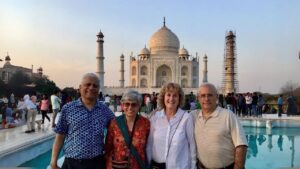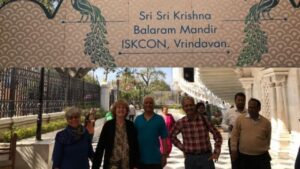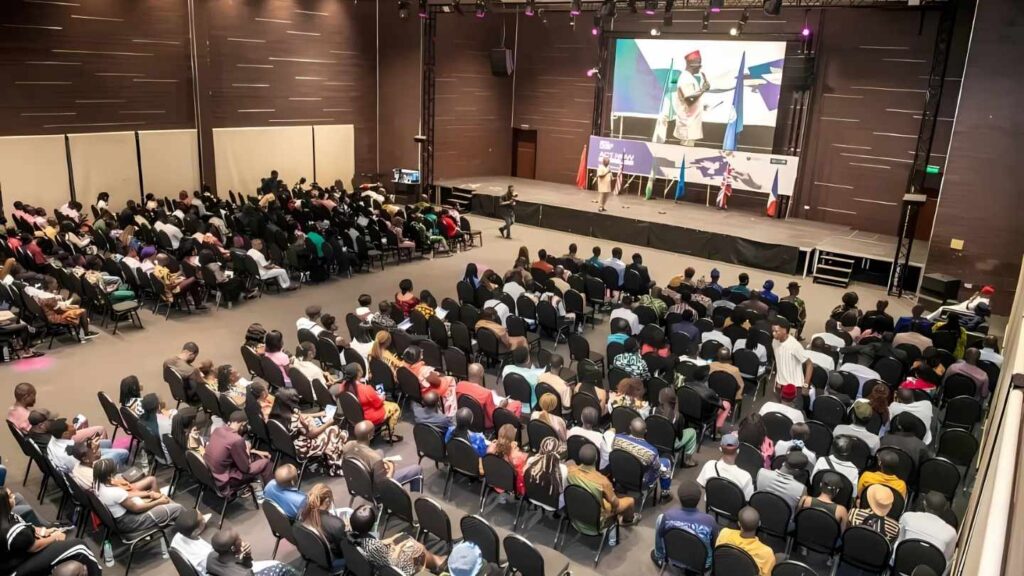Sekhar’s family is royalty without the fanfare in India. Every member of Sekhar’s and Suresh’s family is a future Noble prize winner “in formation.” If we contacted the award grantors in Sweden they would be accused of nepotism! Today we feature Lalitha Sekhar (Sekhar’s wife) The following article was written by her multitalented daughter Amrita Sekhar Dr. Lalitha Sekhar is the Director of Medicine and Geriatrics at Medanta, a large, swanky and fairly recently-established private hospital in Gurgaon. As a physician, she along with her team of 14, is responsible for looking after all aspects related to the prevention, diagnosis, and treatment of diseases such as tuberculosis, dengue, and pneumonia, among others. In her 60’s, she displays more energy, commitment, and drive than most doctors half her age! Sitting at her desk, I find her reading the New England Journal of Medicine. When asked why, she says that the most important and interesting aspect of her job is to keep abreast of the latest developments in medical technology and the new drugs available in the market. Lalitha joined Medanta in February 2013. Prior to this, she has worked with Apollo hospitals in Delhi since 1996. She has an M.B.B.S and MD degree from Maulana Azad in Delhi and is the chairman of the Viswanathan Trust which provides health care at nominal costs to the needy. She shared her journey through her career despite her many constraints: EARLY YEARS, CHILDHOOD AND FAMILY I hailed from a lower middle class family in Delhi. In my early years my family taught me to value tenacity, honesty, and be kind and generous to those lesser privileged than me. I had a difficult childhood as I lost my mother at 8 and therefore, from very early on I had a lot of family responsibilities. I had no person in a guiding role so most of what I have learnt has been self-taught. I met my husband when I was 25. We are poles apart as individuals. He works in the hotel industry and therefore our careers are as different as they can get. But it’s the support that I have received from him and my family that has helped me build a successful career. LESSONS FROM EARLY CAREER After graduating from Maulana Azad, my first job was working as a Senior Resident at Irwin hospital. The job was tough, the hours grueling and I was forever haunted by the fear of making a mistake. However, I learnt a lot in my first job. The important lessons being that you needed to have a very thorough knowledge of medicine and keep abreast of the latest discoveries all over the world. It was here that I got to spend a lot of time with patients and understood how gratifying the job could be. My biggest ambition was to become an academician and eventually a professor in a medical college. However, times were bad and I never got a chance. I tried for 4 years in a row and then gave up. Those were tough years. I set up a small clinic at home. There were days on end when I would get almost no patients. When things started looking up a bit, I was forced to move to Chennai as my husband had gotten a posting there. In many ways the move marked the turning point in my life. I started working at Apollo hospitals in Chennai at their ICU. BASIC DRIVE, PRODUCTIVITY TIPS, AND ADVICE TO OTHER WOMEN I am driven everyday by the feeling of getting a chance to help someone in need. I am intrigued by the medical profession and even after 35 off years in the profession I find it extremely dynamic and challenging. My driving force comes from my family and my children. The biggest productivity tips to success are punctuality, hard work and always keeping yourself abreast of the latest developments and discoveries. Discussing medical problems in a group comprising of people with expertise in varied medical specialties is a highly recommended as working in silos is as detrimental to the medical profession as any other. Medicine is not a strongly gender biased industry with the exception of certain fields like surgery. Hence, my advice to younger women is to be meticulous, work hard, read a lot and be aware of the future direction in which your field is headed. Dream big, work hard and you’ll be content. Medicine is a demanding profession and unlike others it is not governed by fixed working hours. Hence it is beneficial to have a supportive life partner and family. Future blogs will feature Sekhar and his talented daughters and son-in laws…














